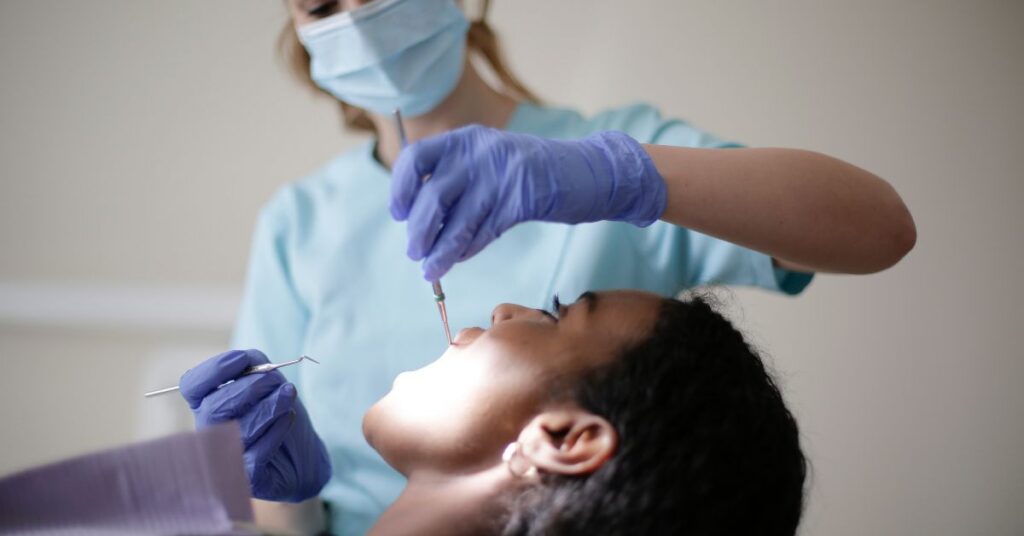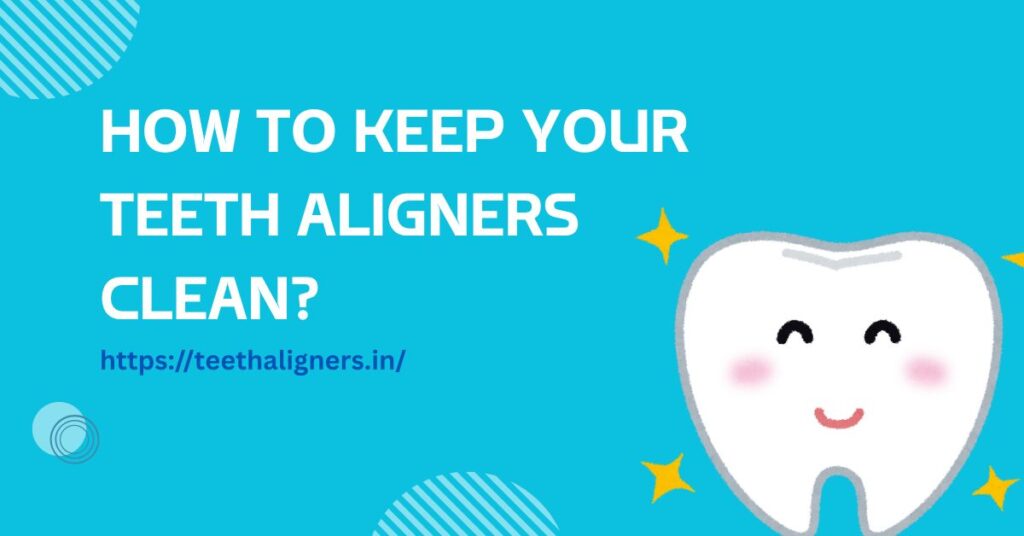More and more people are choosing aligners to straighten their teeth because they’re clear, removable, and easy to wear.
They’ve changed the way people think about braces. But while they’re convenient and almost invisible, they do need one thing from you—good cleaning habits.
Cleanliness is not just about keeping your aligners looking fresh. It’s also about protecting your teeth, gums, and overall oral health during your treatment.
Dirty aligners can lead to problems like bad breath, tooth decay, and even infections.
Many people who use brands like Teeth Aligners in India have seen amazing results. But the key to a successful journey is taking proper care of your aligners every day.
Table of Contents
ToggleWhy Cleaning Your Aligners Matters
Avoiding Bacteria and Bad Breath
Your mouth naturally holds bacteria, and every time you wear Transparent Teeth Aligners, those bacteria get trapped between your teeth and the plastic tray.
If you don’t clean your aligners, that bacteria builds up fast. This can lead to bad breath, plaque, and even cavities.
Wearing dirty aligners is like putting yesterday’s lunch back in your mouth—it’s not healthy or hygienic. Cleaning helps keep your breath fresh and your mouth safe from harmful germs.
Keeping the Plastic Clear
One of the biggest benefits of aligners is how invisible they look. But they only stay clear if you clean them properly. Without regular care, your aligners can become cloudy or stained.
Drinks like tea, coffee, or soft drinks, and foods with strong colours—especially common in India—can discolour aligners.
A stained tray can make your teeth look yellow and ruin the clean appearance that makes aligners so popular.
How Often Should You Clean Your Aligners?
Daily Cleaning Routine
You should clean your aligners twice a day—once in the morning and again at night. This routine helps wash away the bacteria and food particles that build up over time.
In the morning, remove your aligners and brush them gently with a soft toothbrush.
Rinse them under lukewarm water and make sure they look clear before putting them back in.
Do the same at night before you go to sleep. This keeps your trays fresh and ready for another full day of wear.
Also, every time you remove them to eat or drink anything other than water, give them a quick rinse before putting them back in.
Weekly Deep Cleaning
Even with daily brushing, some buildup still happens over time. That’s why it’s helpful to give your aligners a deeper clean at least once a week.
Soaking them in a special solution helps break down any stubborn residue or odours.
There are special cleaning tablets or crystals made for this purpose. Drop one in a glass of lukewarm water, place your aligners in, and let them soak for 15–20 minutes.
After soaking, rinse them well and brush gently if needed. It’s a simple step that keeps your trays crystal clear.
Best Ways to Clean Your Aligners
Rinse with Lukewarm Water (Not Hot!)
Always rinse your aligners using lukewarm water—not hot and not freezing cold. Hot water can soften the plastic and cause the aligners to lose their shape.
If they warp, they won’t fit your teeth properly, and that can slow down your progress.
Every time you take out your aligners—whether it’s for eating, brushing, or drinking something other than water—give them a quick rinse.
This helps wash off any saliva or food particles before they dry and harden on the plastic.
Use a Soft Toothbrush (But No Toothpaste)
Brushing your aligners is important, but how you brush matters even more. Use a soft toothbrush that won’t scratch the plastic.
Avoid using toothpaste because many types contain small abrasive particles that can damage the surface of your aligners.
Scratches can make your aligners look dull and give bacteria a place to hide. Instead of toothpaste, use mild liquid soap or just plain water to gently scrub the aligners.
Try Aligner Cleaning Crystals or Tablets
Cleaning crystals and tablets are easy to find online or at dental shops in India. These products are made to be safe for aligners and remove bacteria, odour, and stains effectively.
To use them, dissolve the crystal or tablet in lukewarm water, then soak your aligners for the time recommended on the package.
These solutions reach small areas that brushing might miss, giving you an extra layer of cleanliness.

Common Mistakes to Avoid
Using Harsh Chemicals or Mouthwash
It might seem like a good idea to clean your aligners with mouthwash or household cleaners—but don’t.
These can contain strong ingredients like alcohol or bleach, which can damage the plastic and make the trays unsafe to wear.
Stick to products made for aligners or use gentle soap and water. Always read labels before using anything on your trays.
Eating with Aligners In
Never eat with your aligners in. Food can get stuck between the tray and your teeth, leading to bacteria buildup.
Hot food can also damage the aligner material. Plus, colourful or sticky foods can stain the clear plastic, making them look dirty even after cleaning.
Always remove your aligners before meals, store them safely, and clean them before reinserting.
Skipping Your Night Routine
Skipping cleaning at night is one of the biggest mistakes people make. Night is when bacteria multiply most because your mouth produces less saliva while you sleep.
If you wear dirty aligners overnight, you’re letting all that bacteria sit on your teeth for hours.
Make it a habit to clean your trays right before bed—just like brushing your teeth.
What to Do If Your Aligners Start Smelling or Turning Yellow
Soak in a Gentle Cleaning Solution
If your aligners start to smell or develop a slight yellow tint, don’t worry—it happens to many users during treatment. A simple fix is to soak them in a homemade mix of half water and half hydrogen peroxide.
Let the trays sit in the solution for about 15 minutes to help remove odour and surface stains. After soaking, rinse them thoroughly under lukewarm water to wash away any residue.
You can also try a mixture of one part white vinegar to three parts water. Soak your aligners for 15 to 20 minutes, then rinse very well to prevent any lingering vinegar smell. These methods are great for occasional refreshes and can help your aligners stay clear and fresh between uses.
Visit Your Dentist for Advice
If the smell or colour doesn’t go away after cleaning, visit your dentist. There could be buildup that’s too tough for home methods.
Your dentist may recommend a different cleaning solution or inspect the trays for damage.
Regular checkups also help track your treatment progress and make sure your aligners are doing their job.
Quick Tips for Cleaner Aligners
Keep a Travel Kit Handy
Carrying a small aligner care kit can be helpful if you’re out all day. Include a soft toothbrush, a small tube of mild soap, and a clean case for your trays.
Whether you’re at school, work, or just spending the day outside, being ready makes cleaning easier.
Rinse Before Reinserting
If you’re unable to brush your teeth after a meal, the next best thing you can do is rinse your mouth thoroughly with water—and don’t forget to rinse your aligners too.
When food particles are left behind and you insert your aligners without cleaning your mouth, it creates a perfect environment for bacteria to grow. This can quickly lead to unpleasant breath, plaque buildup, and even tooth decay.
Rinsing helps flush away leftover food and sugars that bacteria feed on. Even though it’s not as effective as brushing, a thorough rinse with clean water reduces the risk of trapping harmful particles between your teeth and the aligner surface.
You should also take a few seconds to rinse your aligners before placing them back in. This simple habit can help maintain the clarity of your aligners and prevent them from developing a cloudy, smelly film.
In short, even if you’re short on time or away from your toothbrush, a quick rinse is far better than doing nothing. It protects your oral health, keeps your Teeth Aligners in good shape, and prevents discomfort caused by trapped food or bacteria.
Conclusion
Keeping your aligners clean is a simple habit, but one that really matters. It keeps your smile healthy, your trays invisible, and your treatment on track.
Neglecting cleaning can lead to problems like bad breath, stains, and even slowed progress.
By brushing gently, rinsing often, and using safe cleaning solutions, you make sure your aligners stay clear and comfortable.
And remember, regular care is part of what makes your Teeth Aligners In India experience smooth and successful.
Whether you’re just starting your journey or already weeks into it, good cleaning habits will protect your health and help you reach your smile goals.
People all over India are using aligners every day—and with the right care, you can make the most of your own treatment too.
Your aligners do the hard work of moving your teeth—return the favour by keeping them clean. That’s a small step with a big impact.

